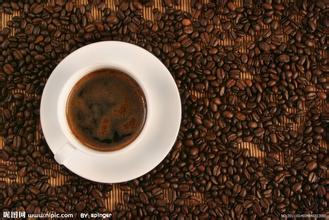Introduction to the characteristic varieties and brands of Kenyan boutique coffee bean flavor and taste manor
Kenya is one of the countries with a good economic foundation in sub-Saharan Africa. We will implement a "mixed economy" system, which is dominated by the private economy and where various economic forms coexist. The private economy accounts for 70% of the overall economy. Agriculture, service industry and industry are the three pillars of the national economy, while tea, coffee and flowers are the three major foreign exchange earning projects in agriculture. Tourism is well developed and is one of the main foreign exchange earning industries. Industry is relatively developed in East Africa, and daily necessities are basically self-sufficient. After Ken became independent, the economy developed rapidly for a time. From the late 1970s to the early 1980s, under the influence of the world economic situation, the economy was in trouble and recovered in the mid-1980s. In the early 1990s, due to political instability, Western aid suspension and natural disasters and other reasons, the economy declined. Since 1991, the structural adjustment plan has been implemented and achieved results. From 1994 to 1996, the average annual economic growth rate reached 5%. Since 1997, the International Monetary Fund has suspended loans to Kenya on the grounds of corruption, and the economy has gone from bad to worse due to natural disasters. In 2000, Kenya's economy grew negatively and fell into the most difficult period since independence. Since 2001, the Kenyan economy has stopped falling and began to grow weakly. In 2003, the new Kenyan government launched an economic recovery strategy, focusing on supporting agriculture and tourism, striving to improve the investment environment, foreign aid began to recover, and manufacturing and agriculture both increased over the previous year. For a period of time, the Kenyan economy will still face the constraints of insufficient funds and backward infrastructure such as electric power, transportation and communications.
Key economic indicators for 2011 [10]
GDP $33.714 billion currency name Kenyan shilling
GDP growth rate 4.4% exchange rate
One dollar = 86.5236 Kenyan shillings
1 RMB = 14.1344 Kenyan shillings
Per capita GDP $911.95 inflation rate 1.9%
Industry
After independence, it has developed rapidly and has a full range of categories, and it is the most developed industrial country in East Africa. Industrial output accounts for 16.2% of GDP. Mainly in the manufacturing industry, in 2002, the output value of the manufacturing industry was 110.853 billion shillings, accounting for 13% of the GDP, with about 230000 employees. The larger enterprises are oil refining, tire, cement, steel rolling, power generation, automobile assembly and other plants. 85% of the consumer goods are produced domestically, of which clothing, paper, food, beverages, cigarettes and other basic self-sufficient, some are also exported to Kenya coffee-status quo
Kenyan coffee beans the Kenyan government takes the coffee industry very seriously, where it is illegal to cut down or destroy coffee trees. Kenyan coffee buyers are world-class high-quality coffee buyers, and no other country can grow, produce and sell coffee on a continuous basis like Kenya. All coffee beans are first acquired by the Kenya Coffee Commission (CoffeeBoardofKenya, CBK), where they are identified, graded, and then sold at weekly auctions, where they are no longer graded. The Kenya Coffee Commission only acts as an agent to collect coffee samples and distribute them to buyers so that they can determine the price and quality. The auction in Nairobi is for private exporters, and the Kenya Coffee Commission pays growers a price below the market price. The best coffee grade is bean berry coffee (PB), followed by AA++, AA+, AA, AB and so on. The fine coffee is shiny, delicious and slightly alcoholic. Auctions are also organized to meet the needs of dispatchers. This kind of auction usually has a small auction volume (3-6 tons each), with samples with the grower's logo for buyers to enjoy. After the auction, the exporters pack according to different flavors, different qualities and the quantity required by the blenders. This provides a great deal of flexibility for the dispatcher. Quality-conscious Germans and Scandinavians are long-term buyers of Kenyan coffee.
On an international scale, the increase in the number of Kenyan coffee is obvious, with exports of 800000 bags in 1969-1970 and increased to 2 million bags in 1985-1986. Now the yield is stable at 1.6 million bags, with an average yield of about 650kg per hectare. Even before coffee prices skyrocketed in recent years, the average price of coffee in Kenya had been rising. Prices in 1993-1994 were 50% higher than they were 12 months ago. The rise in prices is mainly the result of increased demand.
Some buyers, especially Japanese businessmen, have expressed dissatisfaction with the Kenyan coffee industry system. Some businessmen say that the quality of coffee in the country has declined, and point out that buying directly from farmers may be a way to improve the quality. But in any case, Kenya's detailed rules and regulations and sound procedures are a model for all coffee-producing countries.
Kenyan Coffee became more famous with the sensation of the Hollywood movie OutofAfrica. Karen, the heroine played by Meryl Streep (MarylStreep), is a writer and coffee plantation owner. Many people may still remember the beautiful scenery and the magnificent sunset in the film, but what is even more unforgettable is Karen's dream of having a coffee plantation in Africa.

Important Notice :
前街咖啡 FrontStreet Coffee has moved to new addredd:
FrontStreet Coffee Address: 315,Donghua East Road,GuangZhou
Tel:020 38364473
- Prev

Taste of Nicaraguan Coffee treated with Honey introduction to the characteristics of boutique coffee beans in manor area
Since July 1927, Augusto. Cesar. Sandino led the people in a guerrilla war against the US occupation, forcing the US military to withdraw in 1933. On February 21, 1934, the Commander of the Nicaraguan National Guard, Anastacio. Somocha. Garcia assassinated Sandino at the behest of US President Roosevelt. He became president in 1936 and has been pro-American for more than 40 years since then.
- Next

Introduction to the Flavor and Taste characteristics of Columbia Coffee Manor
In 1864, Jubal A. Early led Confederate troops to occupy parts of Montgomery County for a short time and attack the District of Columbia. On July 11, Confederate troops attacked Rockville Pike (MD-355), New Cut Road (now Viers Mill Road MD-586) via Rockville and Wheaton to F, which is only five miles from the White House in the District of Columbia.
Related
- Detailed explanation of Jadeite planting Land in Panamanian Jadeite Manor introduction to the grading system of Jadeite competitive bidding, Red bid, Green bid and Rose Summer
- Story of Coffee planting in Brenka region of Costa Rica Stonehenge Manor anaerobic heavy honey treatment of flavor mouth
- What's on the barrel of Blue Mountain Coffee beans?
- Can American coffee also pull flowers? How to use hot American style to pull out a good-looking pattern?
- Can you make a cold extract with coffee beans? What is the right proportion for cold-extracted coffee formula?
- Indonesian PWN Gold Mandrine Coffee Origin Features Flavor How to Chong? Mandolin coffee is American.
- A brief introduction to the flavor characteristics of Brazilian yellow bourbon coffee beans
- What is the effect of different water quality on the flavor of cold-extracted coffee? What kind of water is best for brewing coffee?
- Why do you think of Rose Summer whenever you mention Panamanian coffee?
- Introduction to the characteristics of authentic blue mountain coffee bean producing areas? What is the CIB Coffee Authority in Jamaica?

